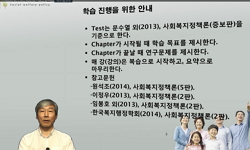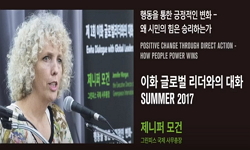This paper theoretically explores housing policy and housing markets in South Korea, mainly from the 1960s to the 1990s, focusing on housing finance system, low-income households, filtering, speculation, housing supply, urban renewal, public housing, ...
http://chineseinput.net/에서 pinyin(병음)방식으로 중국어를 변환할 수 있습니다.
변환된 중국어를 복사하여 사용하시면 됩니다.
- 中文 을 입력하시려면 zhongwen을 입력하시고 space를누르시면됩니다.
- 北京 을 입력하시려면 beijing을 입력하시고 space를 누르시면 됩니다.

Theoretical Reflections on Housing Policy and Housing Markets in South Korea: Focusing on the 1960s to 1990s
한글로보기https://www.riss.kr/link?id=A109237343
-
저자
Yeon-Taek Ryu (Chungbuk National University)
- 발행기관
- 학술지명
- 권호사항
-
발행연도
2024
-
작성언어
English
-
주제어
housing policy ; housing market ; housing finance system ; filtering ; speculation ; public housing. ; 주택 정책 ; 주택 시장 ; 주택 금융 체계 ; 주거여과 ; 투기 ; 공공 주택.
-
등재정보
KCI등재
-
자료형태
학술저널
- 발행기관 URL
-
수록면
145-159(15쪽)
- 제공처
-
0
상세조회 -
0
다운로드
부가정보
다국어 초록 (Multilingual Abstract)
This paper theoretically explores housing policy and housing markets in South Korea, mainly from the 1960s to the 1990s, focusing on housing finance system, low-income households, filtering, speculation, housing supply, urban renewal, public housing, housing renewal projects, squatter clearance. The Korean government developed a self-sustaining housing finance system which connected household savings with the allocation of new houses. It made house purchasers pay part of the price in advance by providing incentives, using the money for housing construction. This method was the reverse of a mortgage, in which households pay the price after purchase. However, such an approach inevitably excluded families who were too poor to save significant sums of money, unless other additional methods could be devised for financing their housing or the benefits of continuing economic growth would fully trickle down. The Korean government, or rather Korean society, ignored the functional need for low-cost housing for low-income households in the period of structural changes in the economy and relied on the unrealized myth of ‘filtering effects’, providing no social housing for those who were suffering from the changing industrial and social structure. As a consequence, low-income households have been increasingly excluded from the benefits of the housing system.
동일학술지(권/호) 다른 논문
-
서울시의 주거지별 아비투스 차이와 공간 불평등 완화를 위한 개선책 연구
- 한국도시지리학회
- 김종성
- 2024
- KCI등재
-
해방촌 ‘지역사회 밀착형 니트 생산 공동체’의 변화와 특성에 대한 연구
- 한국도시지리학회
- 이나영
- 2024
- KCI등재
-
도시서비스 접근성 기반의 도시 압축도 분석: 경상북도 시군을 사례로
- 한국도시지리학회
- 조대헌
- 2024
- KCI등재
-
유사 주택의 유형과 입지 특성에 관한 기초 연구: 인천 숭의동의 지역변화를 사례로
- 한국도시지리학회
- 정원욱
- 2024
- KCI등재




 KCI
KCI KISS
KISS






